- Home
- Painting Tutorials
- How to Paint Clouds
Learn How To Paint Clouds.
Diminish The Daunts.
Discover a simple and powerful strategy to uncomplicate
the process.
Painting clouds can either be a subtle addition or a major part of a finished painting.
The problem with learning how to paint clouds, is that there are so many subtle variables (and sometimes not so subtle!). They can either appear “solid”, or soft and nebulous. This can be a big stopping point if you're learning to paint clouds.
Let’s look at some strategies to simplify some of the information.
Firstly let’s look at a very simple fluffy cloud on a clear day. If you look closely, you will generally find that they have some lighter and darker areas.
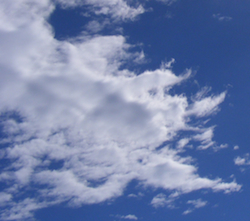
The first step to learning how to paint clouds is similar to learning to paint more solid objects. The difference is often just a much lighter touch.
The trick is to start your darks, and slowly build the highlights on top.
How to Paint Clouds Exercise:
Materials Needed:
Canvas or other painting surface.
Brushes:
A relatively soft, medium sized chisel (eg approximately 1.5cm wide)
Paint:
White
French Ultramarine Blue
Burnt Umber
I use Artists quality acrylic paints by Chroma Australia, Atelier Interactive and Atelier Free Flow.
I recommend keeping it simple. Stay with either a warm blue or a cool blue.
In this exercise I’m using a warm, French Ultramarine Blue.
Paint a canvas, a lovely pale blue colour. Paint a gradation if you like.
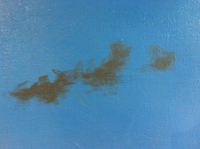
Mix a little bit of Burnt Umber, and a touch of French Ultramarine Blue, and a large pile of White.
This grey will make the shadows on the underside of your cloud.
Clean most of the paint off your brush. Apply the paint gently and loosely, and replicate the random shapes of a cloud.
Add some white to that grey. Apply this colour above the shaded area, bringing it down into the darker grey.
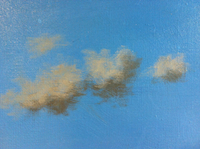
Repeat this process.
You may eventually wish to recreate those beautiful fluffy white clouds.
You’ll need to clean your brush, and apply pure White. As before, blend it down into the greyed areas, and gently pull it across into the sky blue.
You need to use a very soft hand. I recommend applying moisturiser on a regular basis. (That was just to see if you were listening.
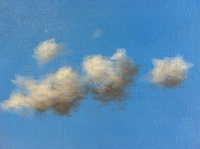
I don’t actually do that. It doesn’t matter if your hands are soft or not. Probably “gentle” would’ve been a better word to use. Ah well, too late now).
That’s the first step in learning how to paint clouds. But we all know that it’s not that simple!
One of the most compelling things about learning how to paint clouds is creating the illusion of a sunset or sunrise.
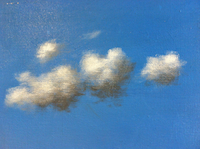
Unless you have a strategy, it can be a little daunting (but oh so rewarding!).
This is another strategy that I use to make painting sunrises and sunsets much more simple.
How to Paint Clouds Demonstration:
I’m going to paint a sunset over trees. There’s light bouncing around everywhere, and all sorts of different shifts in tone and hue. I need to simplify.
Here we go:
On a loosely roughed in canvas, I paint in the darkest areas of the clouds, using Dioxazine Purple, Cadmium Yellow Medium and a touch of French Ultramarine Blue, and White.
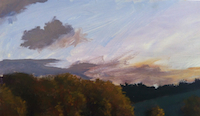
These darkest areas will be the furthest away from the light source.
I now mix a highlight, using the previous mix of colour, but leaving out the French Ultramarine Blue.
I paint this where I think the light will hit the dark cloud.
This highlight then becomes the dark area on the next set of clouds closest to the light source.

I mix up a new highlight for this set of clouds.
This one has less Dioxazine Purple in it. It then becomes the darker area on the next set of clouds closest to the light source.
Can you see a pattern emerging?

I repeat this process, gradually eliminating most of the Dioxazine Purple (and adding a tiny touch of Napthol Red Light).
By the time I’m closest to the light source, the highlights will be almost white.
Simply said: the highlights on the last cloud become the shadows on the next one.
The premise behind this, is that the closer you get to the light source, the warmer and paler the clouds will become.

This is a great place to start. As usual, don’t sacrifice your observational skills, and make sure you make adjustments to suit the piece you’re doing.
This strategy however, can still be used in hundreds of different skies.

The only difference being variances in colour and tone.
Yay! Now go and paint!
You can check out this demonstration
“Over The Shoulder”
in live moving colour, right here!!
(NB: smellovision not available in this region, thank goodness)

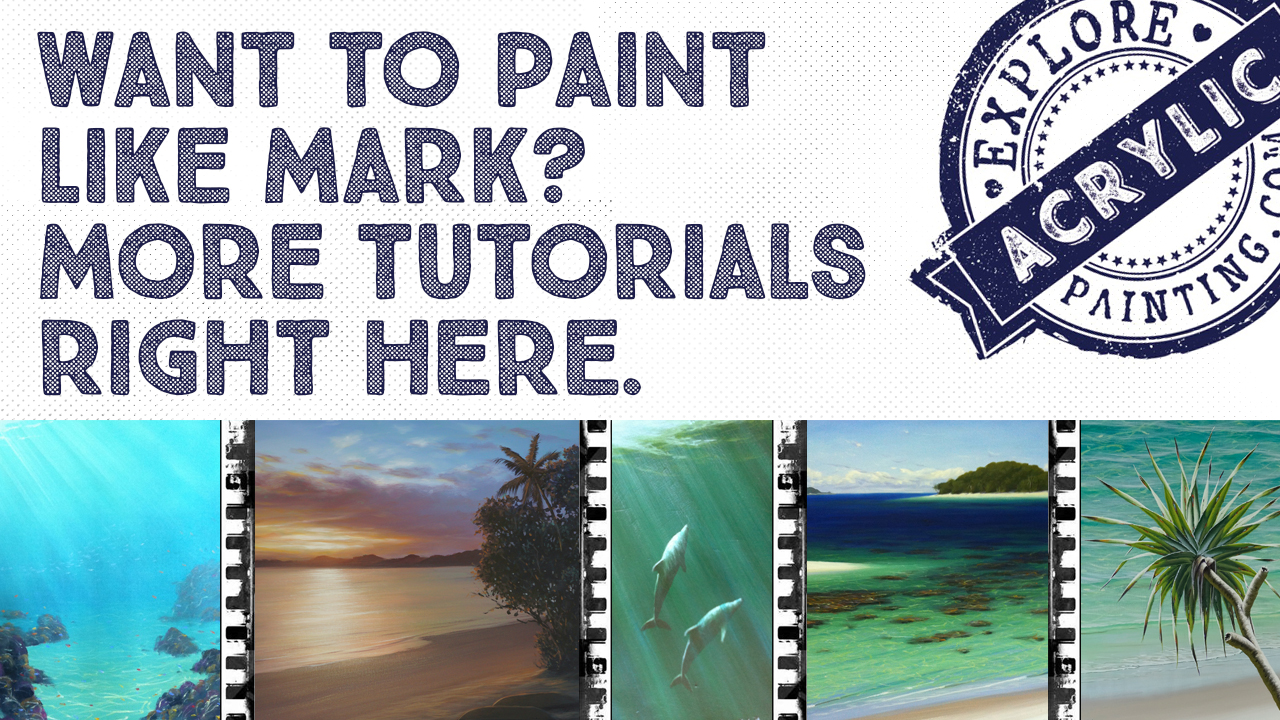












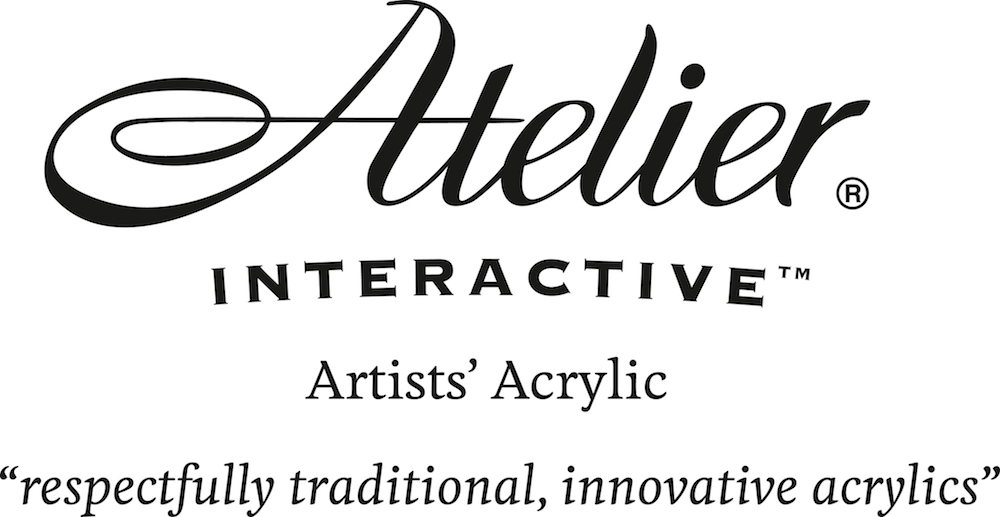


New! Comments
Have your say about what you just read! Leave me a comment in the box below.